Aurora Australis lights up Australia
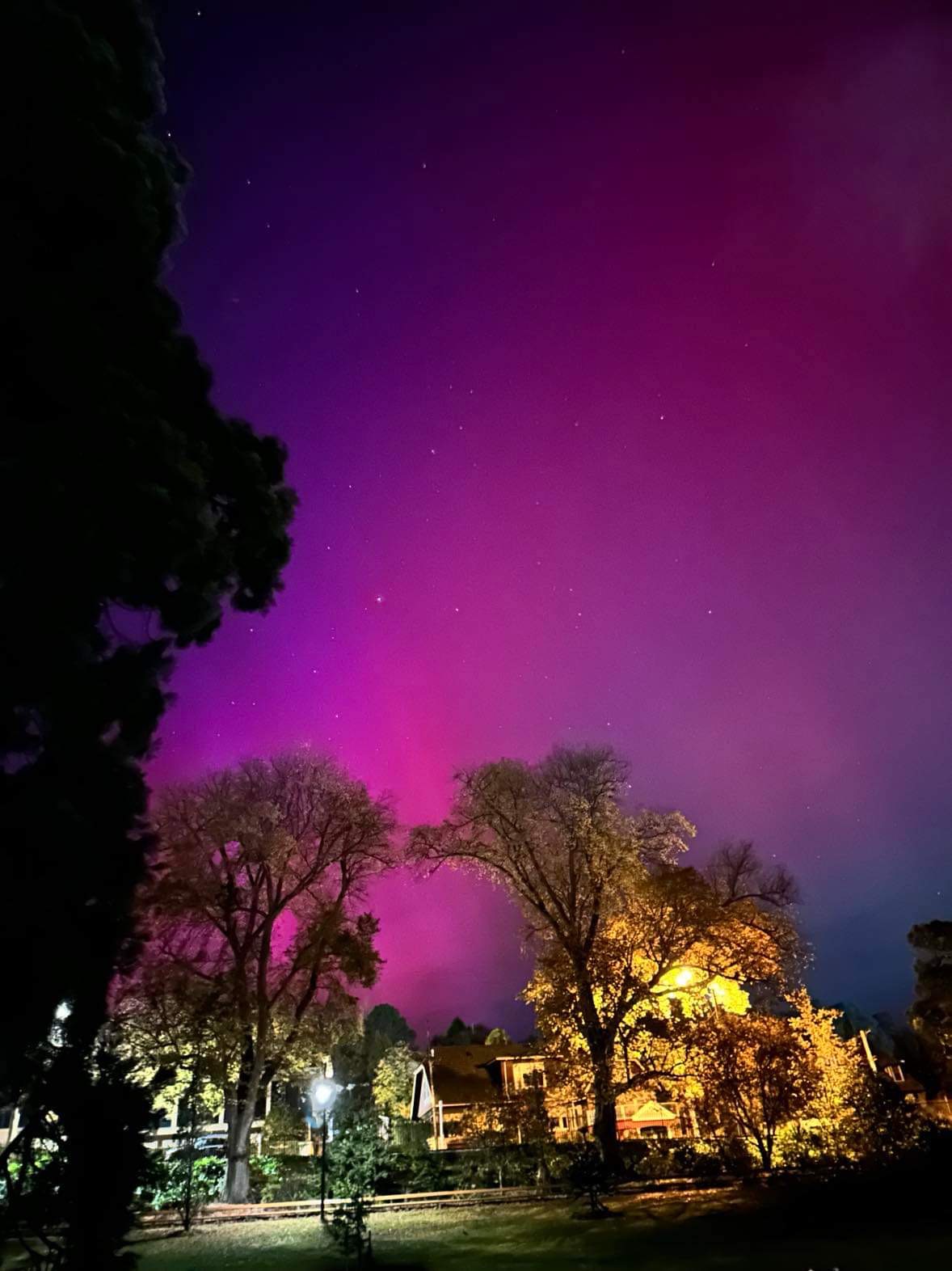
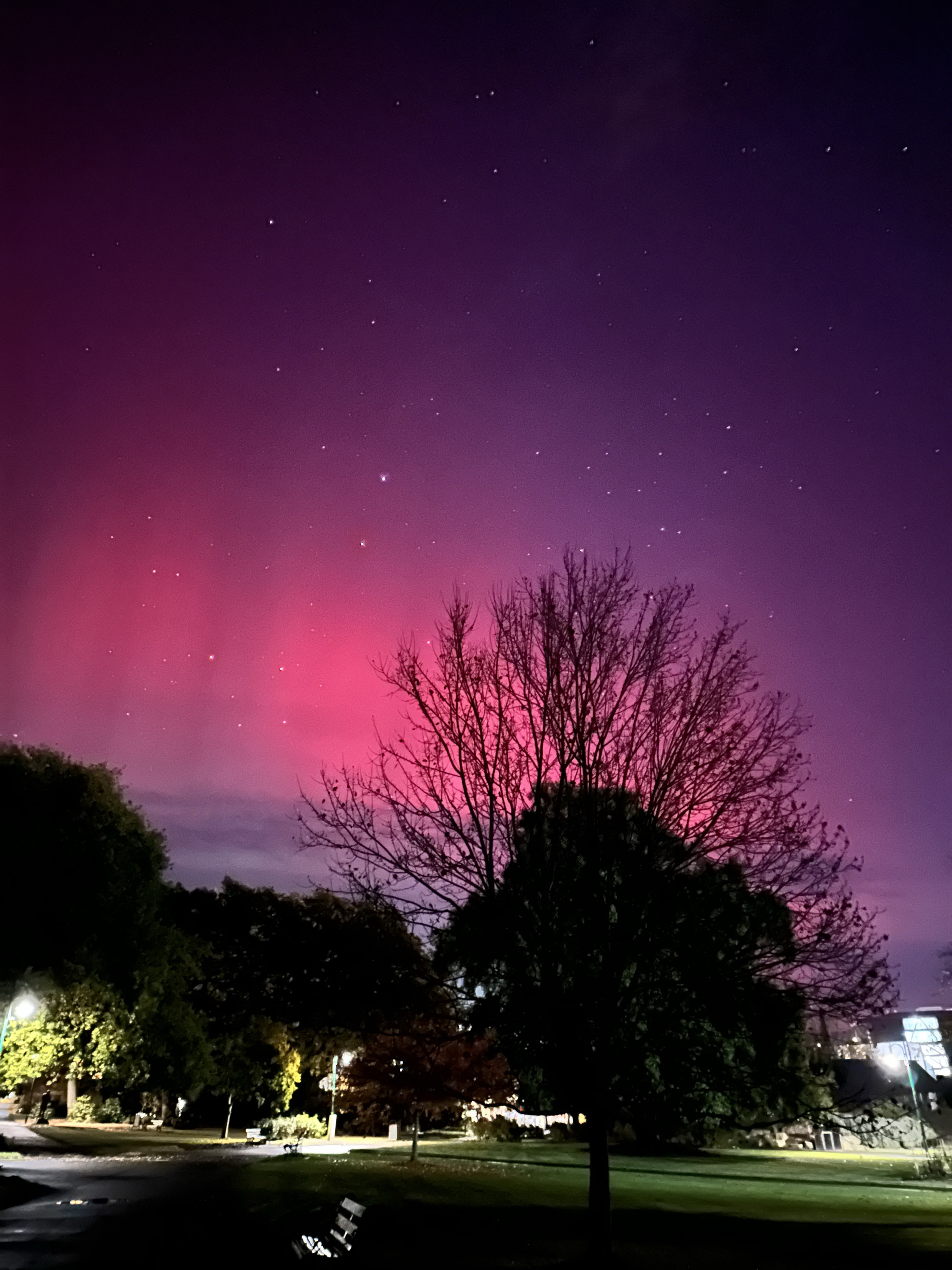
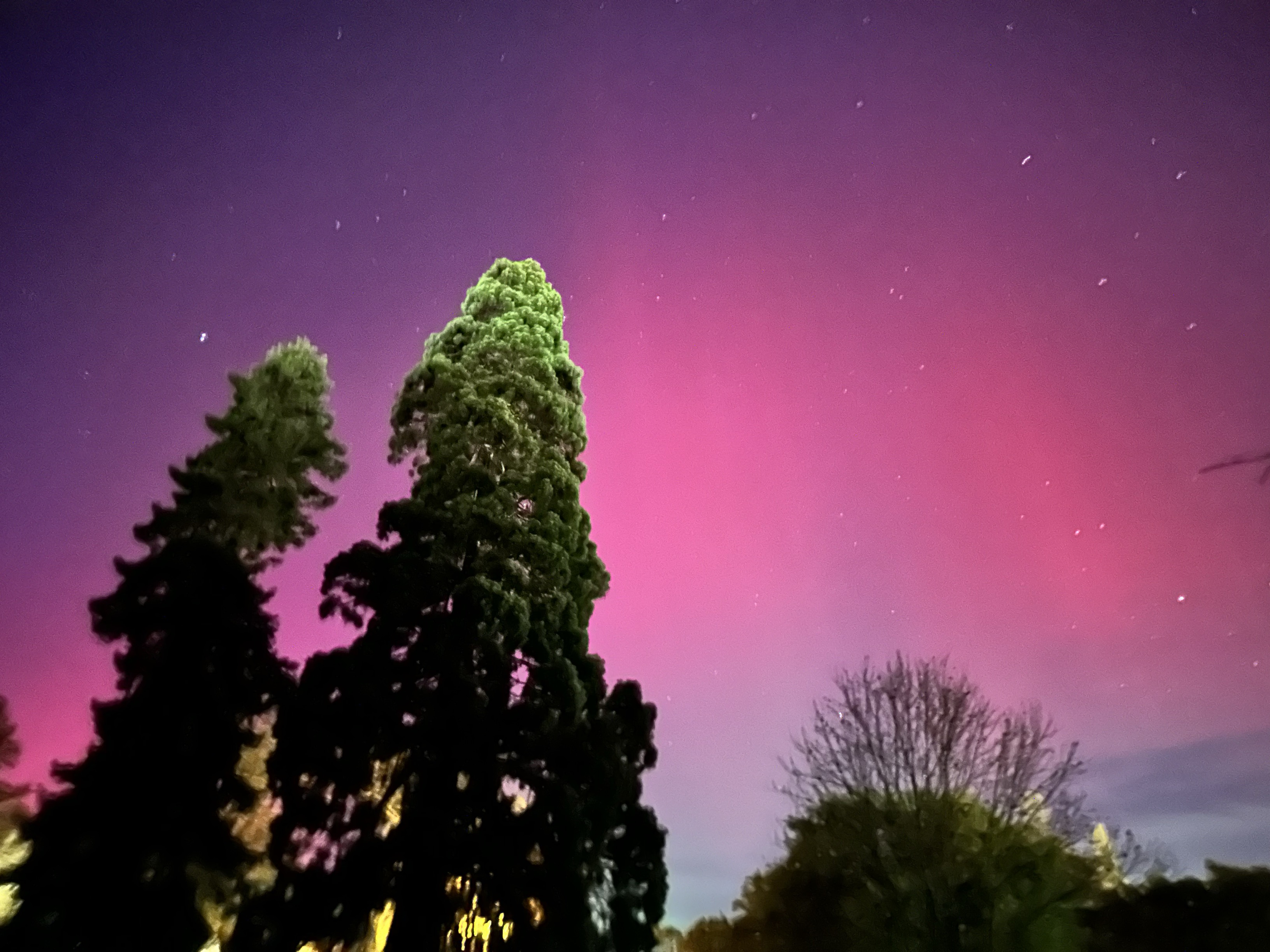
Images: Aurora Australis viewed from Launceston at about 5am Sat 11th. Photos taken by Quincy Tut
Avid skywatchers around most of the world have been captivated by the magnificent display of the aurora borealis/australis, commonly known as the northern/southern lights, in recent nights. Amid the strongest geomagnetic storm in years, these lights, typically only seen in polar latitudes, have been observed in the tropical latitudes, encompassing most of Australia!
The aurora lights are generated when solar flares erupting from the sun emit massive amounts of electrons into the solar system. When these electrons reach earth, they interact with our planet’s magnetic field and are driven towards the magnetic poles. When colliding with the gaseous ions in the upper atmosphere, these particles generate the displays of light that we ultimately see as the southern lights. The southern lights typically occur between 50 and 800km above the surface, which means they can sometimes be seen from thousands of kilometers away from where they are.
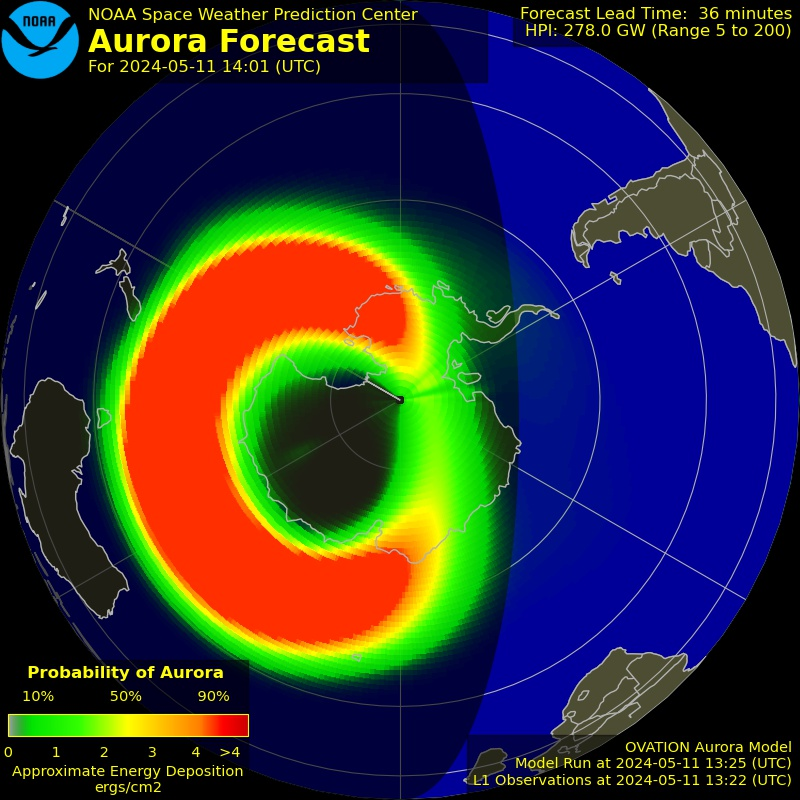
Image: Probability of Aurora over the southern hemisphere at about 12am Sunday morning AEST. The aurora can still be seen from hundreds of kms away from where it is due to the height it occurs at. Source: NOAA
While the southern lights are one of the most spectacular phenomena in the natural world, the geomagnetic storms associated with them can leave negative impacts. These impacts include disruptions to satellites, GPS systems, and electricity infrastructure which can lead to blackouts.
Of course, to observe the southern lights, clear skies and minimal light pollution is essential, and for most of the country, the weather has co operated to give many what could be a once in a lifetime experience. Last night, the aurora australis was observed from Tasmania, through Victoria, South Australia and southern and western WA, and parts of NSW and Queensland as far north as Townsville – just 19° south of the equator!
Unfortunately, thick cloud over central and southeast NSW and the ACT, including Sydney and Canberra, prevented many from viewing the spectacular light show last night, as eastern NSW continues to be soaked by a trough that continues to send rain over the region today.

GIF: Himawari enhanced infrared satellite imagery overnight Saturday into Sunday morning showing the aurora blockers (cloud cover) over southeast NSW and eastern Vic
In good news for anyone who still wants to get a look at the southern lights, a moderate geomagnetic storm is forecast to impact the planet in the next 24 hours, leading to at least one more night of increased aurora activity for the southern half of the country.
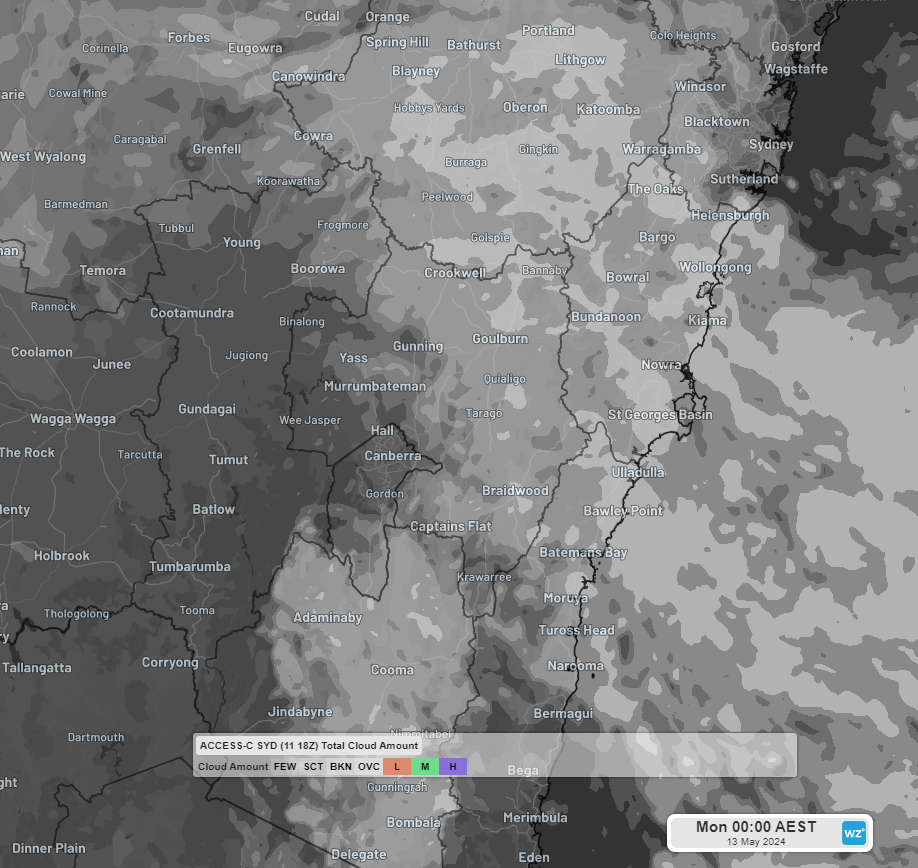
Image: forecast cloud cover over Sydney and southeast NSW, including the ACT at 12am Monday morning using ACCESS-C Syd
Unfortunately for much of Tas and southwest WA, cloud cover will likely block much of the view tonight as a front impacts the southeast and a trough encroaches the southwest. For Sydney, southeast NSW and the ACT, the trough should start to move away this afternoon, and while skies won’t be entirely cloud free, there is a good chance of at least some patches of clear sky. This means that if you’re looking to the south, you may just be lucky enough to see the aurora australis.